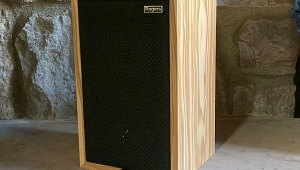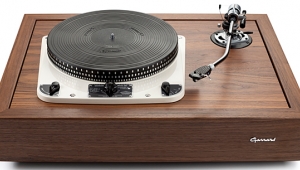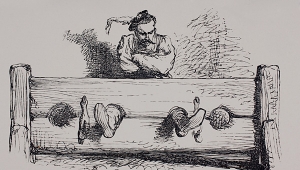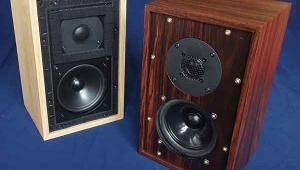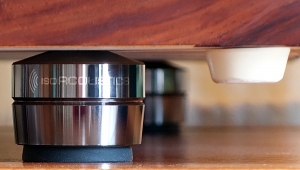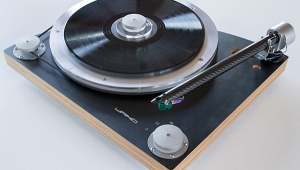| Columns Retired Columns & Blogs |
Listening #145
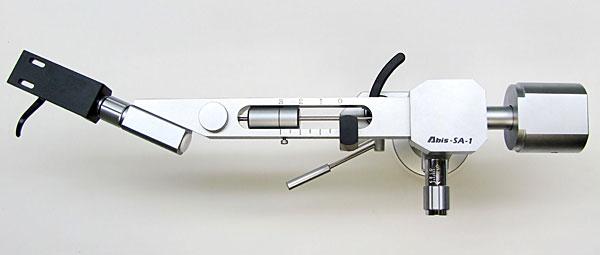
Kids, you tried your best and you failed miserably. The lesson is: Never try.—Homer Simpson
Months ago, as we put together the most recent installment of "Recommended Components," Phillip Holmes, of Mockingbird Distribution, got in touch and asked if we would please remove from our list the Abis SA-1 tonearm, which Mockingbird distributes (and which I first wrote about in our March 2014 issue, footnote 1). As it turns out, Abis is making some changes to the arm, and Holmes didn't think it would be right to let the recommendation endure until we'd had a chance to try the new one.
In most instances, when an equipment supplier wishes to discuss "Recommended Components," his or her intent is to protest or to try to prevent an item's removal, or to get us to bump it up a notch or three. Requests to remove an entry as an act of conscientiousness (as opposed to pique) are rare.
File that away.
Smart S
As I learned from a more recent e-mail, the revision of the Abis SA-1 is nearing completion. In the meantime, Phillip Holmes has sent me a review loaner of another new Abis tonearm, the TA-1L ($1999): a transcription-length arm with an altogether more traditional appearance than that of its blockier stablemate. (The SA-1 looks like other tonearms in the same way Rock-'em Sock-'em Robots look like real people.)
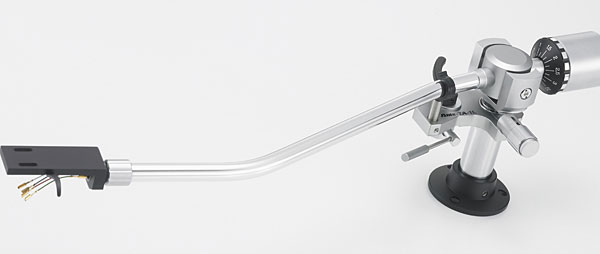
The Abis TA-1L has an S-shaped armwand of polished aluminum tubing; its removable headshell, bearing cradle, bearing cover, and most of its structural elements are machined from solid aluminum. The headshell is anodized in semigloss black, while those other parts have a textured finish. The arm's vertical bearings are cup-and-point types similar to the ones used in various EMT tonearms, while its horizontal bearings are of the miniature ball-and-race sort used in all positions of the Abis SA-1.
Vertical tracking force (VTF) is applied statically, with a two-piece counterweight of the usual sort; the weight is calibrated only to 2.5gm, but VTFs of up to 5gm can easily be set. Also incorporated into the design is a spring-actuated antiskating device that looks identical to the one used in the SA-1; this is calibrated up to 3gm, with no provision for higher forces—which is reasonable enough, since the need for bias seems to diminish at greater-than-average VTFs, especially with tonearms whose offset angle is more modest than the norm.
Abis specifies for the TA-1L a spindle-to-pivot distance of 310mm; that, combined with the recommended overhang of 15mm, produces an effective length of 325mm, which is closer to 13" than 12". On both the Mockingbird Distribution website and in the installation manual that accompanied my review sample, Abis describes the arm's offset angle as 22°, but that seems unlikely. First of all, the angle simply doesn't look that wide—an unscientific observation, I know, but there it is. More to the point, an angle of 22° is also specified for the 232mm (9.05") version of this arm, the TA-1—and, all other things being equal, the longer the tonearm, the smaller its offset angle can be, which is the whole point of making them long in the first place.
New arm for the old turntable
One afternoon, I set about listening to a few records with Ortofon's SPU 95 pickup head (which I reviewed in December 2014) installed on my Thomas Schick Tonearm—itself engineered for Style G pickup heads—on my Thorens TD 124 turntable. Then I removed the Schick and its armboard, drilled a fresh poplar board for the Abis, and installed the TA-1L with the same Ortofon pickup. While doing so, I was impressed by the build quality of the reportedly handmade Abis, and of its bearings in particular: In both planes of movement, the TA-1L's bearings were completely free of excess play, yet commendably friction-free.
The Abis contributed to a more detailed and slightly punchier sound than the Schick. The nylon-string guitar that opens "Who By Fire," from Leonard Cohen's New Skin for the Old Ceremony (LP, Columbia C 33167), was a smidge more forceful than with the Abis in my system; similarly, electric bass, percussion, and the twin lead vocals had a better sense of presence—and, in the case of the voices, of texture. With the TA-1L, the recording's overall timbral balance had shifted upward ever so slightly, but without excess bite or brightness.
I was also impressed with how the Abis arm pulled up from the (noise) floor the quietest pianissimo phrases in the slightly odd recording (footnote 2), by Lorin Maazel and the Vienna Philharmonic, of Bruckner's Symphony 5 (LP, London CSA-2238). More than in any other Bruckner 5 I've heard, the very first measures are, at normal volume settings, scarcely audible; the Abis gave my system the extra detail and focus needed for me to discern what was going on. Much the same was true of the well-known recording of Britten's War Requiem, with the composer conducting the London Symphony Orchestra et al (LP, London OSA 1255). On the other hand, the Abis missed a slight degree of the depth and weight that the Schick arm found in the sounds of brass, double basses, and drums.
A pause for a cartridge change offered the chance to use my evergreen DB Systems DBP-10 protractor to check the combination of Abis TA-1L and Ortofon SPU 95 for any errors in tracking angle. I was mildly surprised to see that lateral tracking angle strayed somewhat from the Baerwald alignment standard on which the DB protractor is based—although it was definitely in the ballpark. That prompted me to double-check the arm's spindle-to-pivot distance, which I had established by using the installation template included with the Abis. The specs call for a spindle-to-pivot distance of 310mm, but my installation showed 308mm—and I was really careful! Desperate to preserve my self-esteem, I measured the Abis template itself—a plastic strip with a spindle hole at one end and a marking-pin hole at the other—and found it to measure only 308mm from hole to hole. Well, heck, there's my problem right there.
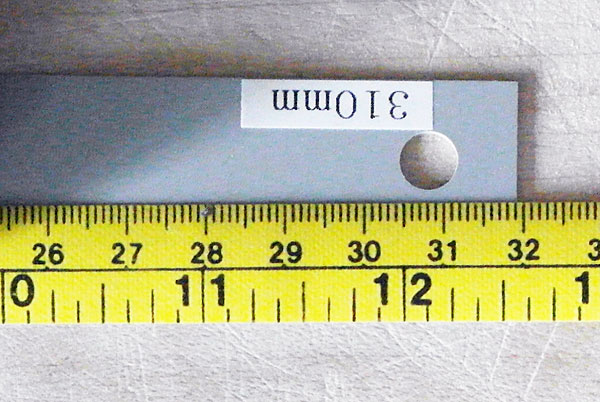
Or part of it. By loosening two of the three bolts that hold my armboard in place, I was able to pivot the board and gain the extra 2mm. But the alignment, while closer to the mark, remained imperfect. It was clearly time to read the instruction manual—and it was there that I found, not in the text but in a very small illustration, another clue: According to Abis, the distance between the headshell collet and the stylus tip of a properly aligned cartridge should be 50mm. That's all well and good, and a 50mm distance should be easy to achieve when installing a standard-mount cartridge in the TA-1L's own headshell. But the stylus-to-collet distance of the average Style G pickup head—ie, virtually everything in Ortofon's SPU line—is 52mm (footnote 3). Heck, there's the rest of my problem.
And let the record show: Neither Abis nor Mockingbird has promoted the TA-1L as a tonearm expressly designed for use with Style G pickup heads. I just sort of assumed.
Eventually, I reauditioned the above tracks with the armboard positioned for correct alignment with the Style G Ortofon SPU 95. My observations didn't change appreciably, but my sense of well-being—or, more to the point, my confidence in the well-being of my records—improved considerably. My self-esteem remained high.
Back to Mono
Lessons learned, I set about installing my Miyajima Premium BE Mono cartridge in the TA-1L's headshell. The Miyajima has always excelled at sheer punch, a respect in which it is bettered, in my experience, only by EMT's now-discontinued OFD models. The Abis tonearm allowed the Miyajima to retain that quality, and also to shine as a detail-retrieval champ of the first order. I'm sure I've listened hundreds of times to "Repent Walpurgis," from Procol Harum's eponymous debut album; yet while spinning a mono reissue of same (LP, Regal Zonophone/Classic LRZ 1001), I was surprised to hear that, during the first half of Robin Trower's guitar solo, pianist Gary Brooker plays, behind the Cm and E-flat chords, a five-note figure that duplicates the rhythm of Dave Knights's electric bass line—the first time I'd noticed it! (In fact, until the middle of the song and Brooker's quote from Bach's Prelude and Fugue in C, BWV 846, the piano part is not very high in the mix.)
Footnote 1: Abis/Sibatech Inc., Room 1301, 8-25-22 Higashi-Suna, Koto-ku, Tokyo 136-0074, Japan. Tel: (81) 3-3645-1646. Fax: (81) 3-3645-1948. Web: www.sibatech.co.jp. US distributor: Mockingbird Distribution, LLC, 703 Elm Circle, Van Alstyne, TX 75495. Tel: (214) 668-2509. Web: www.mockingbirddistribution.com.
Footnote 2: But aren't they all (the good ones, at least)?
Footnote 3: An Ortofon Technical Data sheet dated 3/2/1994 suggests that this dimension should be 51mm. Because I'm an alignment nerd, I have measured every Ortofon Style G pickup head to come my way, and the overwhelming majority of them have measured 52mm or very slightly more.
- Log in or register to post comments


